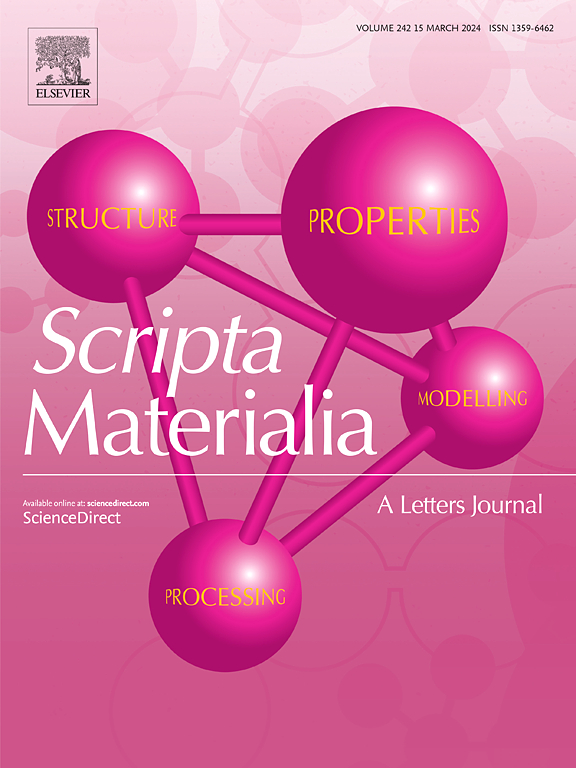Precipitation driven nano-twinning: Simultaneous enhancement of mechanical and electrical properties in Cu-Ni-Sn alloys
IF 5.3
2区 材料科学
Q2 MATERIALS SCIENCE, MULTIDISCIPLINARY
引用次数: 0
Abstract
After homogenization, hot forging and solid-solution treatment at 800 °C, the Cu-15Ni-9Sn alloy was cold-rolled to a 60 % thickness reduction and aged at 400 °C. After 1 h aging, spinodal decomposition produced the Sn and Ni enriched DO22 phase coherent with the matrix, while abundant nanotwins emerged in the vicinity of (Cu, Ni)3Sn precipitates in the recrystallized matrix. Compared to the as-rolled state, the alloy exhibited enhanced hardness (316 HV), ultimate tensile strength (1131 MPa), and electrical conductivity (9.7 % IACS). Extending aging to 4 h led to extensive (Cu, Ni)3Sn secondary phase formation and pronounced recrystallization, reducing strength to 855 MPa but increasing electrical conductivity to 11.7 % IACS and total elongation to 12.9 %. The synergistic interplay of spinodal decomposition, local recrystallization, precipitation and nano-twinning underpinned the superior mechanical and electrical properties of the 1 h aged Cu-15Ni-9Sn alloy.

沉淀驱动的纳米孪晶:Cu-Ni-Sn合金力学和电学性能的同时增强
Cu-15Ni-9Sn合金经过均匀化、热锻和800℃固溶处理后,冷轧减薄60%,400℃时效处理。时效1 h后,多轴分解生成了与基体相一致的富含Sn和Ni的DO22相,在再结晶基体中(Cu, Ni)3Sn析出物附近出现了丰富的纳米孪晶。与轧制状态相比,合金的硬度(316 HV)、抗拉强度(1131 MPa)和电导率(9.7% IACS)均有所提高。时效延长至4 h,导致大量(Cu, Ni)3Sn二次相形成和明显的再结晶,强度降至855 MPa,但电导率提高至11.7% IACS,总伸长率提高至12.9%。单轴分解、局部再结晶、析出和纳米孪晶的协同作用是1 h时效Cu-15Ni-9Sn合金优异的力学和电学性能的基础。
本文章由计算机程序翻译,如有差异,请以英文原文为准。
求助全文
约1分钟内获得全文
求助全文
来源期刊

Scripta Materialia
工程技术-材料科学:综合
CiteScore
11.40
自引率
5.00%
发文量
581
审稿时长
34 days
期刊介绍:
Scripta Materialia is a LETTERS journal of Acta Materialia, providing a forum for the rapid publication of short communications on the relationship between the structure and the properties of inorganic materials. The emphasis is on originality rather than incremental research. Short reports on the development of materials with novel or substantially improved properties are also welcomed. Emphasis is on either the functional or mechanical behavior of metals, ceramics and semiconductors at all length scales.
 求助内容:
求助内容: 应助结果提醒方式:
应助结果提醒方式:


